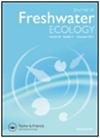小型水电站水库鱼类群落环境DNA元条形码:eDNA方法与现有捕捞方法的比较
IF 1.3
4区 环境科学与生态学
Q3 ECOLOGY
引用次数: 6
摘要
环境DNA方法已成为各种水生生态系统中鱼类多样性研究和渔业管理的一种有前途的工具。然而,小水电水库鱼类群落的eDNA元条形码研究却很少得到关注。在这项研究中,我们通过将eDNA元条形码与基于捕获的捕捞方法和水声调查相结合的结果进行比较,验证了eDNA元条形码是否适合用于鱼类群落特征和渔业资源评估。结果表明,eDNA元条形码的物种检测性能与传统捕捞渔具基本相似。然而,同样值得注意的是,eDNA方法虽然发现了一些额外的物种,但未能覆盖基于捕获方法检测到的所有物种。此外,尽管我们观察到鱼类的位点发生与序列丰度之间存在显著的相关性,但定量建立eDNA序列计数与鱼类丰度/生物量之间的相关性的努力并未成功。因此,我们的研究表明,eDNA元条形码是传统捕捞方法的重要补充工具,可用于小水电大坝水库鱼类多样性的调查和生物监测。进一步研究eDNA在水库中产生、存留、运输和降解的机制可能有助于从eDNA数据解释鱼类丰度和生物量。本文章由计算机程序翻译,如有差异,请以英文原文为准。
Environmental DNA metabarcoding of fish communities in a small hydropower dam reservoir: a comparison between the eDNA approach and established fishing methods
Abstract Environmental DNA methods have emerged as a promising tool in fish diversity studies and fishery management in various aquatic ecosystems. However, eDNA metabarcoding of fish communities in small hydropower dam reservoirs has received limited attention. In this study, we tested whether eDNA metabarcoding was an appropriate approach for the characterization of fish communities and fishery stock assessment by comparing its results with combined capture-based fishing methods and hydroacoustic surveys, which involved species detection and abundance/biomass evaluation. Our results indicated that the species detection performance of eDNA metabarcoding was basically similar to that of traditional capture-based fishing gear. However, it was also noteworthy that the eDNA method failed to cover all species detected by capture-based method, although some additional species were found. Besides, although we observed a significant correlation between site occurrence and sequence abundance for fishes, an effort to quantitatively establish a correlation between eDNA sequence counts and fish abundance/biomass was unsuccessful. Therefore, our study suggested that eDNA metabarcoding was an important supplementary tool to traditional capture-based fishing methods for the investigation and biomonitoring of fish diversity in small hydropower dam reservoirs. Further studies on the mechanisms of eDNA production, persistence, transportation and degradation in reservoirs might facilitate the interpretation of fish abundance and biomass from eDNA data.
求助全文
通过发布文献求助,成功后即可免费获取论文全文。
去求助
来源期刊
CiteScore
2.20
自引率
7.70%
发文量
34
审稿时长
3 months
期刊介绍:
The Journal of Freshwater Ecology, published since 1981, is an open access peer-reviewed journal for the field of aquatic ecology of freshwater systems that is aimed at an international audience of researchers and professionals. Its coverage reflects the wide diversity of ecological subdisciplines and topics, including but not limited to physiological, population, community, and ecosystem ecology as well as biogeochemistry and ecohydrology of all types of freshwater systems including lentic, lotic, hyporheic and wetland systems. Studies that improve our understanding of anthropogenic impacts and changes to freshwater systems are also appropriate.

 求助内容:
求助内容: 应助结果提醒方式:
应助结果提醒方式:


